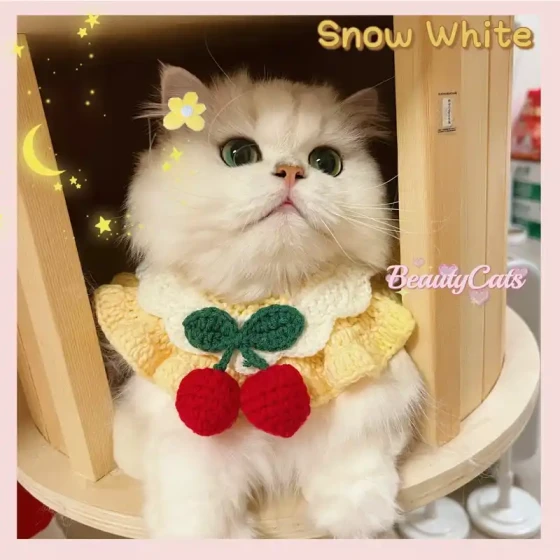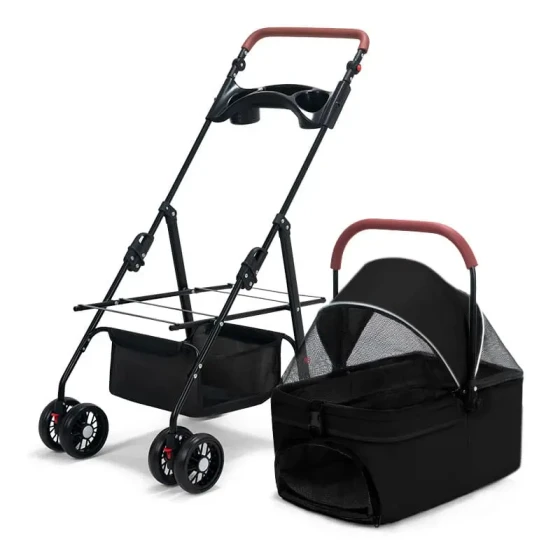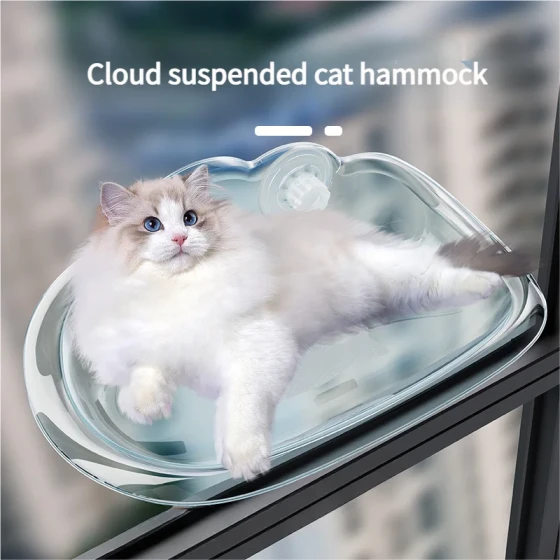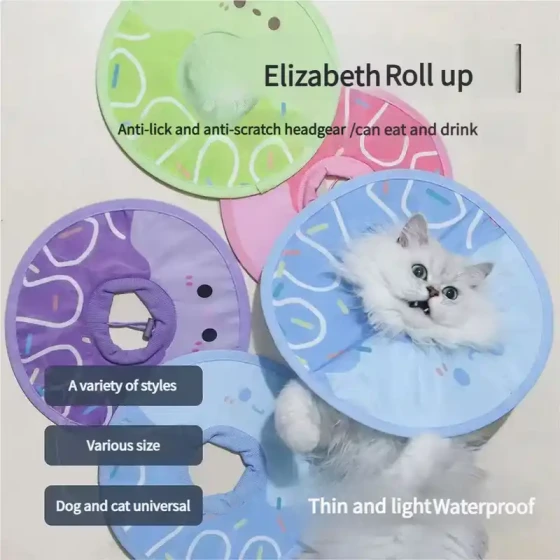Cat Continues Twitching and Howling_Reasons and Responses to Abnormal Cat Behavior
Cats suddenly twitching and howling is not acting or having a nightmare, but a serious alarm from their body. When encountering this situation, cat owners surely feel as tense as riding a roller coaster. In fact, such abnormal behavior in cats may hide various health problems, from common epilepsy to poisoning, or other nervous system diseases, all could be the “culprit.” Understanding these potential causes and taking correct response measures at key moments is crucial to protect the cat’s health.
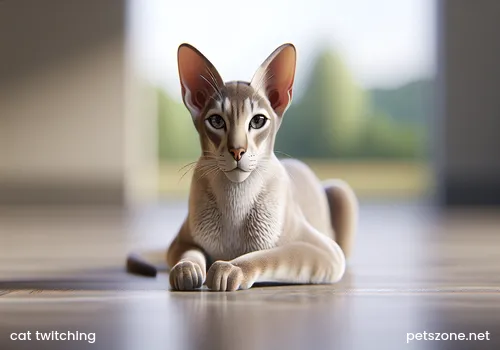
Twitching accompanied by howling in cats is usually not a minor issue and needs high attention. This behavior is often the body signaling “I am very uncomfortable.” Unlike humans who can express pain or discomfort clearly through language, cats convey messages more through behavior, and twitching and howling is one of the intense ways.
Common Causes of Cat Twitching and Howling
Cats suddenly twitching and howling may involve the following situations:
1. Epilepsy
Just like humans, cats can also suffer from epilepsy. Epilepsy is a neurological disorder caused by abnormal brain discharges, resulting in involuntary twitching and convulsions. During epileptic seizures, cats may collapse, limbs stiffen or move paddling-like, foam at the mouth, lose consciousness, sometimes accompanied by abnormal vocalizations, and even urinate or defecate involuntarily.
The causes of epilepsy are diverse, possibly originating from brain problems (such as brain tumors, encephalitis, brain trauma), or caused by other diseases (such as liver and kidney diseases, hypoglycemia, poisoning, infections). Some cats’ epilepsy has no clear cause, called idiopathic epilepsy.
2. Poisoning
Accidental ingestion of toxic substances is another common cause of twitching and howling in cats. Cats are naturally curious and like to lick their fur, easily coming into contact with potential poisons at home, such as certain plants, cleaning agents, pesticides, medicines, or even human foods like chocolate, onions, garlic, etc. Symptoms of poisoning depend on the type and dose of the toxin ingested. Besides twitching and howling, vomiting, diarrhea, lethargy, and difficulty breathing may also appear.
3. Pain
Cats are very good at hiding pain, an instinct to avoid predators in the wild. But when the pain is intense and unbearable, they may express it through abnormal behavior, such as howling or body trembling. Causes of severe pain vary, possibly internal organ problems, fractures, severe inflammation, etc. If a cat reacts strongly with howling or twitching when a certain area is touched, it indicates severe pain in that spot.
4. Other Nervous System Problems
Besides epilepsy, some other neurological diseases may cause twitching and howling symptoms in cats, such as encephalitis, meningitis, brain tumors, spinal cord diseases, etc. These ailments affect a cat’s motor coordination, balance, and behavior.
5. Hypoglycemia or Hypocalcemia
Low blood sugar or calcium levels can also trigger twitching in cats. Hypoglycemia is common in kittens, cats with certain illnesses, or cats not fed for long periods. Hypocalcemia may be related to malnutrition or other metabolic diseases.
6. Feline Hyperesthesia Syndrome
This is a relatively rare neurological-related disorder where cats may suddenly have skin twitching, excessive licking, frantic running, howling, sometimes seeming hallucinated. Although the exact cause is unknown, it may relate to focal epilepsy, skin problems, or psychological factors.
7. Other Factors
In rare cases, cat twitching with howling may also relate to other issues, such as severe heatstroke or heart disease.
How to Respond to Abnormal Cat Behavior?
When a cat suddenly twitches and howls, cat owners must stay calm and take the following actions:
- Stay calm and ensure a safe environment: This is the most important step. Don’t panic, remain composed to avoid frightening the cat. Quickly remove nearby objects that could hurt the cat, such as sharp furniture, wires, etc., to prevent injury during twitching.
- Do not forcibly restrain the cat: Cats cannot control their body during twitching; forcibly pressing or holding may lead to accidental injury to you and increase the cat’s distress.
- Do not put anything in the cat’s mouth: Many mistakenly think that putting something in the mouth during a seizure prevents tongue biting, but this is very dangerous for cats and may cause airway blockage.
- Observe and record symptoms: Carefully note the duration, frequency, physical signs (such as limb stiffness, shaking, foaming at the mouth, consciousness loss), and characteristics of the vocalizations. If possible, record a video of the seizure with your phone; this provides important diagnostic information for the vet.
- Seek veterinary care promptly after seizure ends: Once the twitching stops and the cat regains consciousness, immediately take it to a veterinarian. Even short seizures require professional examination to find the root cause.
- Inform the vet of detailed information: Describe all details of the seizure to the vet, including pre-seizure behavior, symptoms during the seizure, duration, and post-seizure condition. Also provide the cat’s medical history, medication, diet, and if it has recently contacted new objects or environments.
- Follow vet’s treatment instructions: The veterinarian will diagnose and provide a treatment plan based on examinations. Blood tests, imaging (X-rays, CT or MRI), or cerebrospinal fluid analysis may be needed to determine the cause. Treatment might include medication (such as anticonvulsants), surgery, or other cause-specific therapies.
Prevention and Daily Care
Although some diseases cannot be completely prevented, careful daily care can reduce the risk of abnormal behavior:
- Provide a safe living environment: Keep toxic plants, cleaning agents, medicines, etc., out of the cat’s reach.
- Balanced and healthy diet: Ensure the cat receives comprehensive and balanced nutrition to avoid issues like hypoglycemia.
- Regular health check-ups: Take the cat to the veterinary clinic regularly for health exams to help detect and treat potential problems early.
- Pay attention to behavior changes: Observe daily behavior, appetite, mental state carefully; if abnormalities appear, seek veterinary care promptly. Behavioral changes such as sudden reluctance to move, hiding, loss of appetite, or personality change may indicate discomfort.
Frequently Asked Questions
- Does it hurt when cats twitch? During epileptic seizures, cats usually lose consciousness or are confused, so they likely don’t feel pain. But the underlying causes of twitching (such as severe inflammation or trauma) may cause pain.
- Do cats remember what happened after twitching? Typically, cats have no memory of the seizure episode after it ends.
- Why are cats’ vocalizations abnormal? Cats use their vocalizations to express emotions and needs. Abnormal sounds, like continuous howling or painful whining, may express fear, pain, discomfort, or confusion.
Cats are our family. Their health and happiness are our greatest wishes. When they send out distress signals, as owners, we need basic knowledge and emergency skills, but more importantly, seek professional veterinary help promptly to provide the best medical care. Remember, a little more care means a little more peace of mind.
